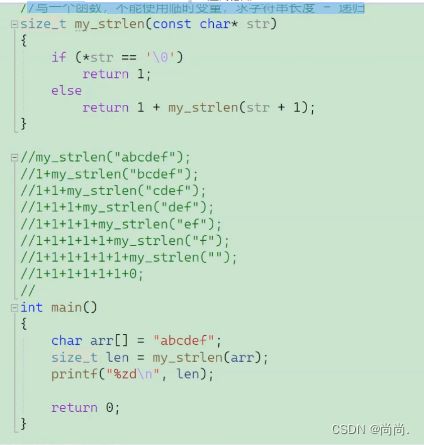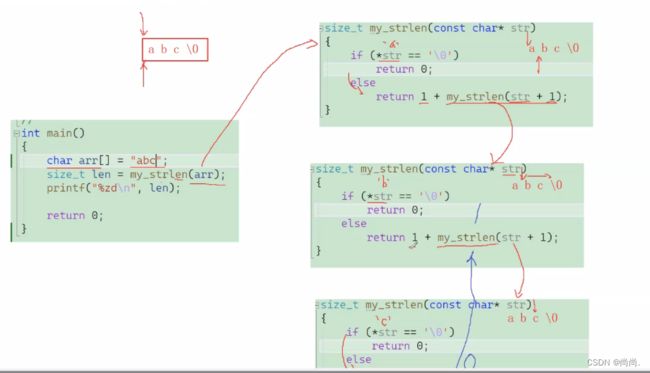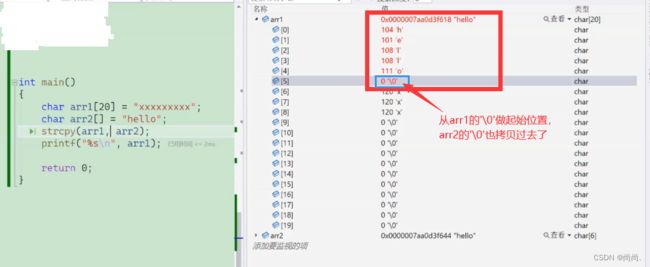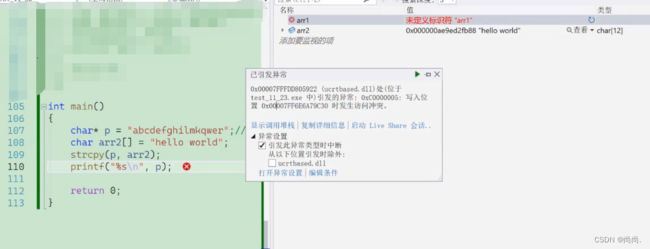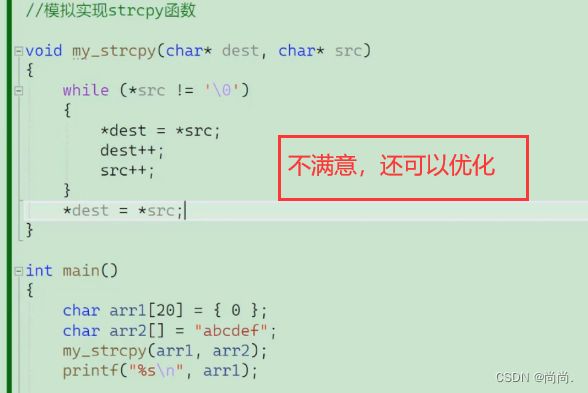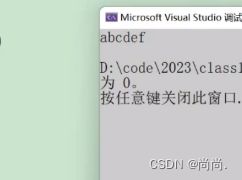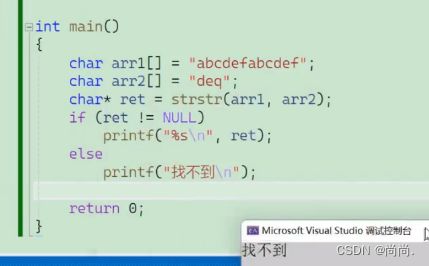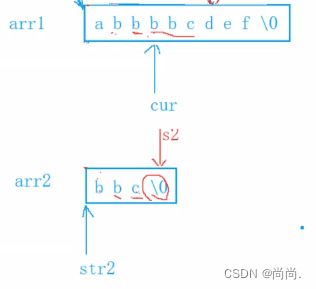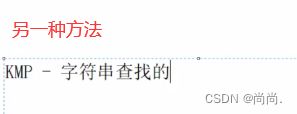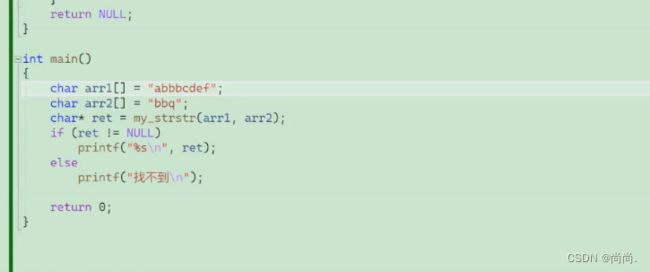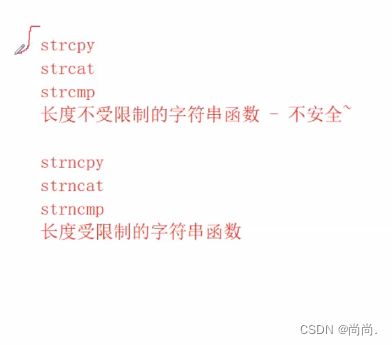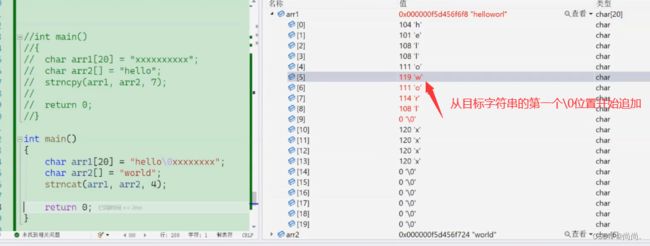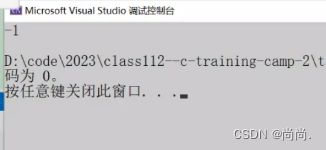字符分类函数 / 字符转换函数
目录
1. 字符分类函数
2. 字符转换函数
二、他们都头文件都为#lnclude
① strlen的使用和模拟实现
举例strlen函数的使用:
strlen的模拟实现:
方式1:计数器方式
方式2:指针-指针的方式
方法三: 递归 - 不能使度用临时变量
② strcpy 的使用和模拟实现
③ strcat 的使用和模拟实现
④ strcmp 的使⽤和模拟实现
⑤ strstr 的使用和模拟实现
④ strtok 函数的使用
④ strerror 函数的使用
三
① strncpy 函数的使用
② strncat 函数的使用
③strncmp函数的使用
1. 字符分类函数
C语⾔中有⼀系列的函数是专⻔做字符分类的,也就是⼀个字符是属于什么类型的字符的。这些函数的使⽤都需要包含⼀个头⽂件是 ctype.h
函数 如果他的参数符合下列条件就返回真 iscontrl 任何控制字符 isspace 空白字符:空格‘’,换页‘f’ ,换行'n',回车‘r’ ,制表符'\t'或者垂直制表符'\v' isdigit 十进制数字‘0’~‘9’字符 isxdigit 十六进制数字,包括所有十进制数字字符,小写字母a~f,大写字母A~F islower 小写字母a~z isupper 大写字母A~Z isalpha 字母a~z或A~Z isalnum 字母或者数字,a~z,A~Z,0~9 ispunct 标点符号,任何不属于数字或者字母的图形字符 (可打印) isgraph 任何图形字符 isprint 任何可打印字符,包括图形字符和空白字符 这些函数都很类似,比如:
int islower ( int c );islower 是能够判断参数部分的 c 是否是⼩写字⺟的。通过返回值来说明是否是⼩写字⺟,如果是⼩写字⺟就返回⾮0的整数,如果不是⼩写字⺟,则返回0。举例:写⼀个代码,将字符串中的⼩写字⺟转⼤写,其他字符不变。#include#include int main () { int i = 0; char str[] = "Test String.\n"; char c; while (str[i]) { c = str[i]; if (islower(c)) c -= 32; putchar(c); i++; } return 0; }
2. 字符转换函数
C语言提供了2个字符转换函数:int tolower ( int c ); //将参数传进去的⼤写字⺟转⼩写 int toupper ( int c ); //将参数传进去的⼩写字⺟转⼤写上⾯的代码,我们将⼩写转⼤写,是-32完成的效果,有了转换函数,就可以直接使⽤ tolower 函数。#include#include int main () { int i = 0; char str[] = "Test String.\n"; char c; while (str[i]) { c = str[i]; if (islower(c)) c = toupper(c); putchar(c); i++; } return 0; }
二、他们都头文件都为#lnclude
① strlen的使用和模拟实现
size_t strlen ( const char * str );
举例strlen函数的使用:
注意:表达式中的比较值是什么类型,如无符号整型与整型比较,结果会不同:strlen的模拟实现:
方式1:计数器方式
//计数器⽅式 int my_strlen(const char * str)//const确保str里面储存的内容不在接下来的过程中被改变 { int count = 0; assert(str);//断言一下,保证指针有效性 while(*str)//也可以写成(*str!='0') { count++; str++; } return count; }方式2:指针-指针的方式
//指针-指针的⽅式 int my_strlen(const char *s) { assert(str); char *p = s; while(*p != ‘\0’ ) p++; return p-s; }方法三: 递归 - 不能使度用临时变量
写一个函数,不能使度用临时变量,求字符串长
//不能创建临时变量计数器 int my_strlen(const char * str) { assert(str); if(*str == '\0') return 0; else return 1+my_strlen(str+1); }
② strcpy 的使用和模拟实现
字符串拷贝函数
char* strcpy(char * destination, const char * source );
strcpy函数解释和注意:
从arr1的\0做起始位置,arr2的\0也要拷贝过去
缺少\0,会无法停止
a常量字符串,不能修改目标空间必须是可修改的strcpy的模拟实现://1.参数顺序 2 //2.函数的功能,停⽌条件 3 //3.assert 4 //4.const修饰指针 5 //5.函数返回值 6 //6.题⽬出⾃《⾼质量C/C++编程》书籍最后的试题部分 7 char *my_strcpy(char *dest, const char*src) 8 { 9 char *ret = dest; 10 assert(dest != NULL); 11 assert(src != NULL); 12 13 while((*dest++ = *src++)) 14 { 15 ; 16 } 17 return ret; 18 }strcpy函数模拟解释和注意
③ strcat 的使用和模拟实现
追加一个字符串函数
strcat函数简单介绍:
模拟实现strcat函数:
④ strcmp 的使⽤和模拟实现
字符串的比较 函数
⑤ strstr 的使用和模拟实现
strstr 的使用char * strstr ( const char * str1, const char * str2);
④ strtok 函数的使用
a
char * strtok ( char * str, const char * sep);
④ strerror 函数的使用
a
char * strerror ( int errnum );
#include#include #include //我们打印⼀下0~10这些错误码对应的信息 int main() { int i = 0; for (i = 0; i <= 10; i++) { printf("%s\n", strerror(i)); } return 0; }
注意:
C语言是可以进来文件操作的
打开文件:
FILE* pf = fopen(...)
如果文件打开成功,则返回一个地址
如果文件打开失败,则返回NULL
errno_
举例:#include#include #include int main () { FILE * pFile; pFile = fopen ("unexist.ent","r"); if (pFile == NULL) printf ("Error opening file unexist.ent: %s\n", strerror(errno)); return 0; } 输出:
#include1 #include 2 #include 3 #include 4 int main () 5 { 6 FILE * pFile; 7 pFile = fopen ("unexist.ent","r"); 8 if (pFile == NULL) 9 perror("Error opening file unexist.ent"); 10 return 0; 11 } 输出:
三
① strncpy 函数的使用
char * strncpy ( char * destination, const char * source, size_t num );
num大于源字符串长度 会追加\0
② strncat 函数的使用
char * strncat ( char * destination, const char * source, size_t num );
/* strncat example */ #include#include int main () { char str1[20]; char str2[20]; strcpy (str1,"To be "); strcpy (str2,"or not to be"); strncat (str1, str2, 6); printf("%s\n", str1); return 0; } 指定nun追加完。再追加一个\0
从目标字符串的第一个\0位置开始追加
指向的字符串的⻓度⼩于num的时候,只会将字符串中到\0 的内容追加到destination指向的字符串末尾
③strncmp函数的使用
aint strncmp ( const char * str1, const char * str2, size_t num );


